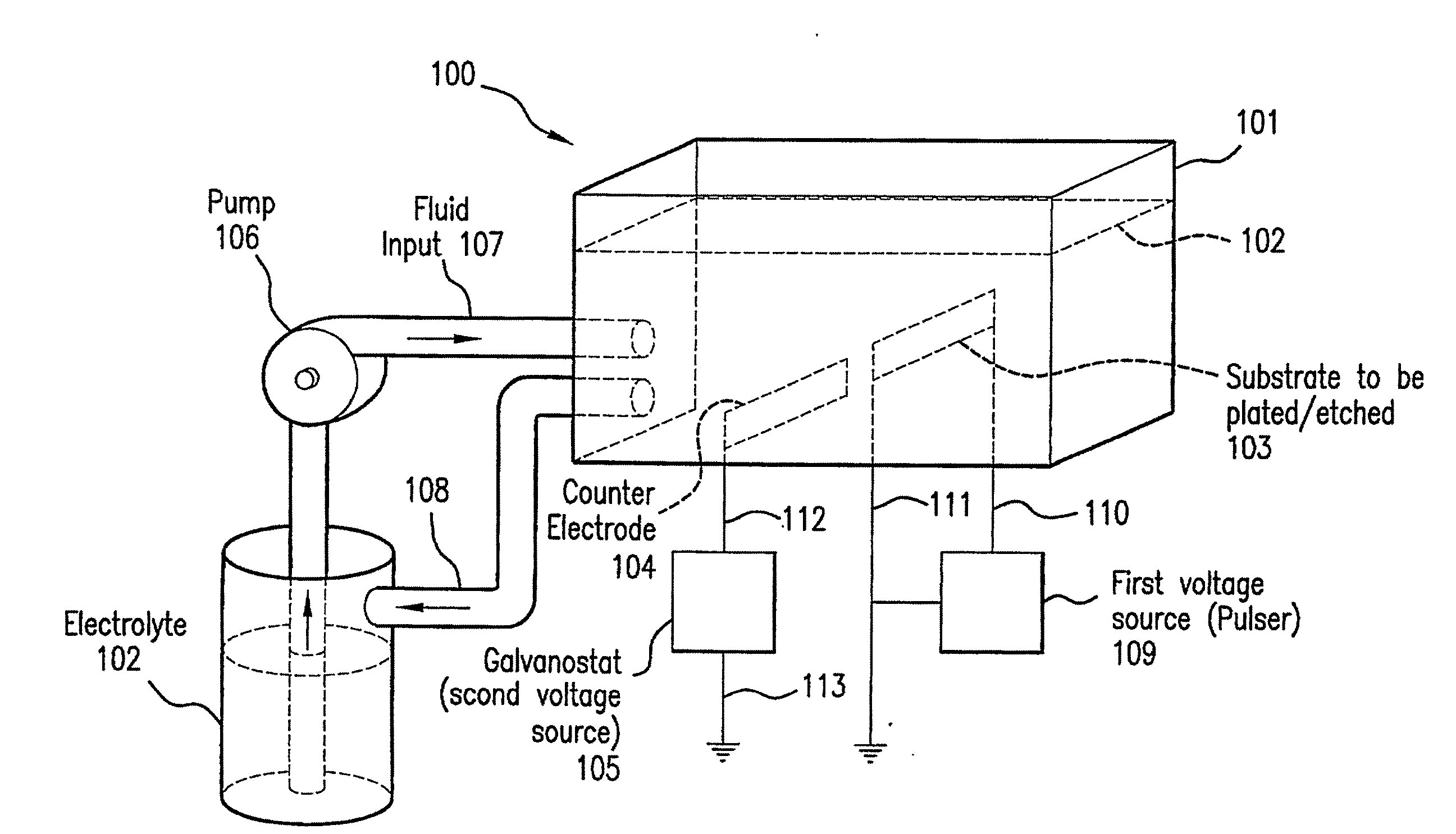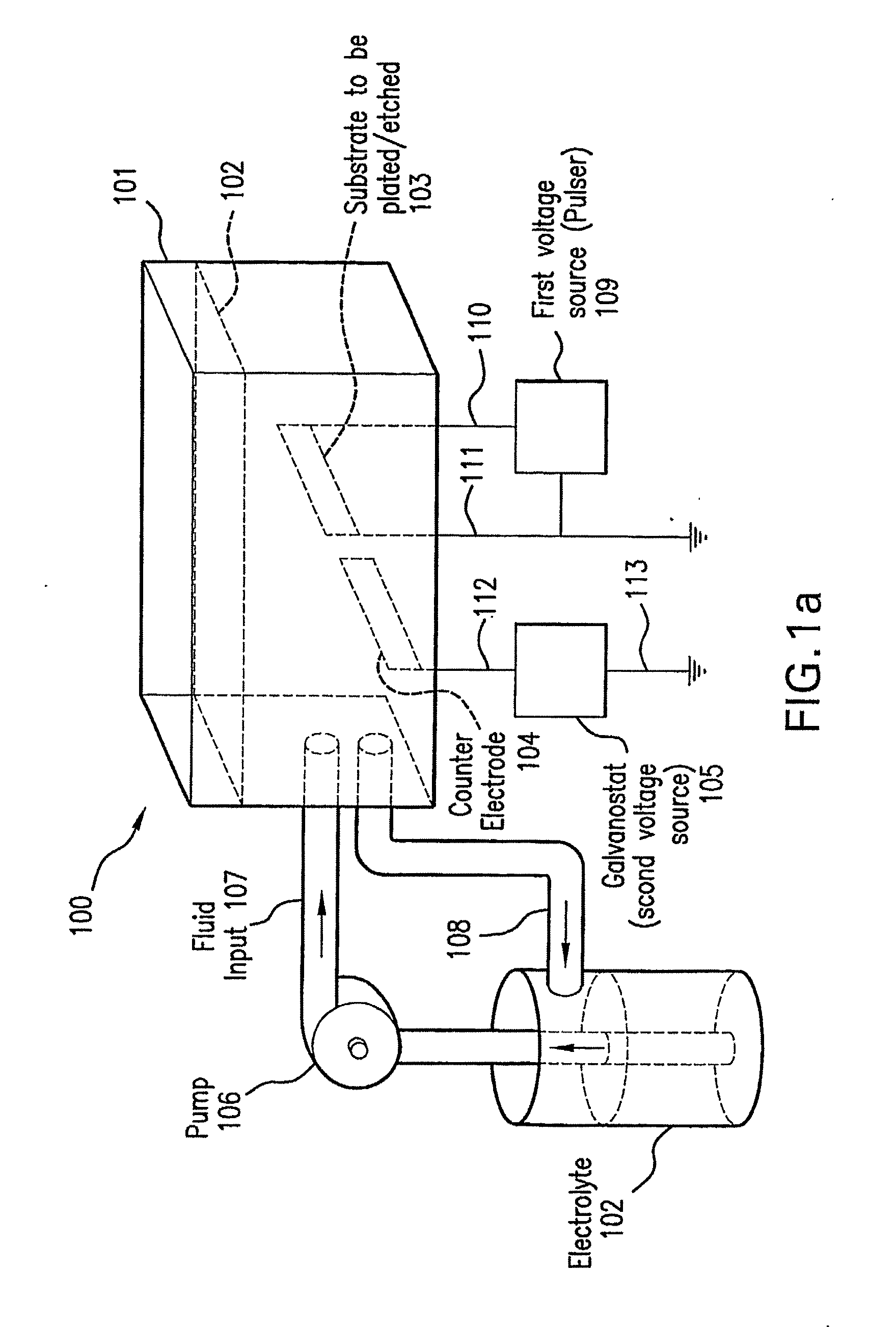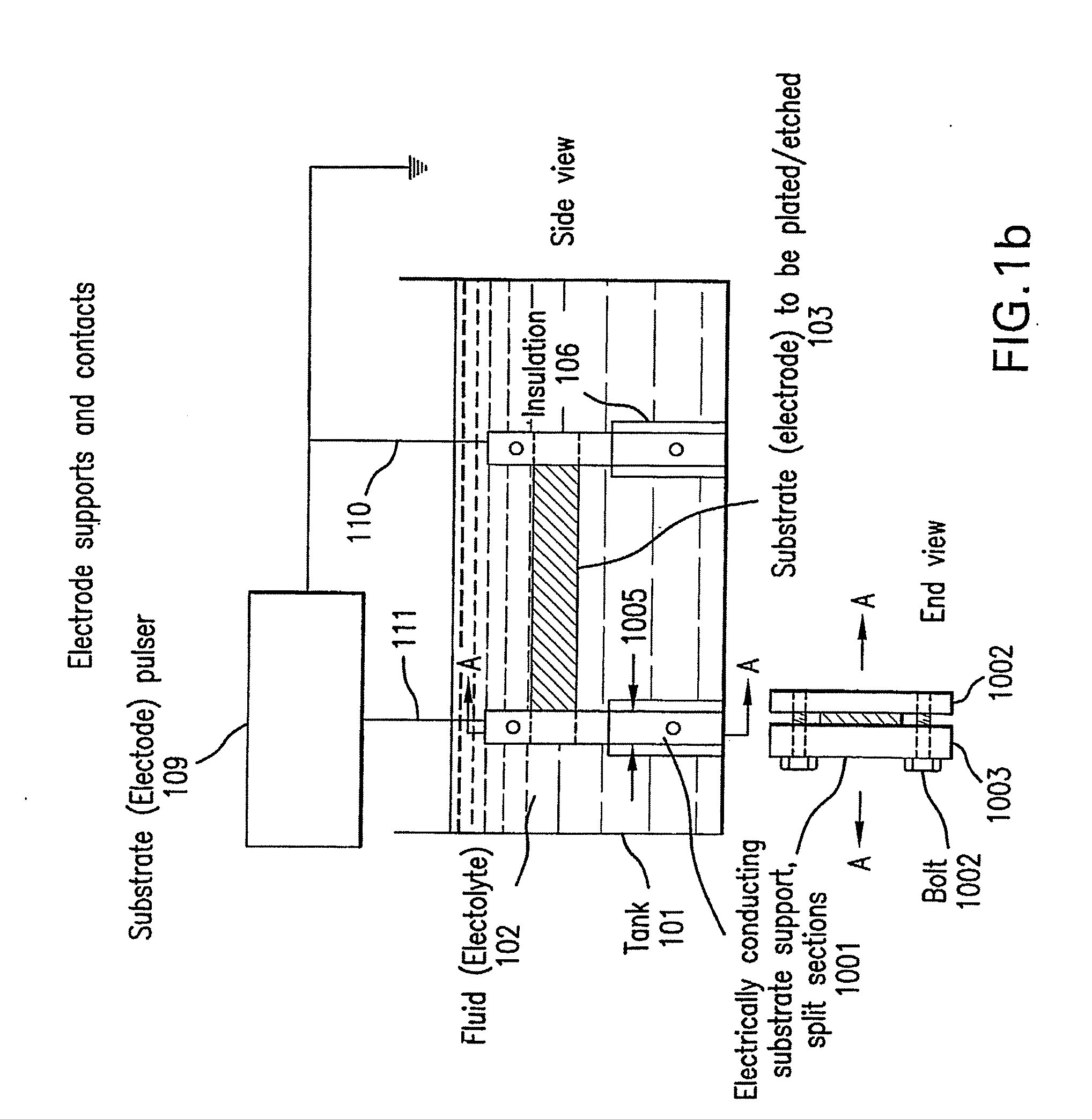In situ plating and etching of materials covered with a surface film
a surface film and metal plating technology, applied in the field of system and method of metal plating and substrate etching, can solve the problems of metals that are difficult to plate by simple immersion plating or electroplating techniques, plating these metals, etc., to prevent surface oxidation and avoid exposure of clean substrate surfaces.
- Summary
- Abstract
- Description
- Claims
- Application Information
AI Technical Summary
Benefits of technology
Problems solved by technology
Method used
Image
Examples
Embodiment Construction
[0040]The present invention provides systems and methods for metal plating and etching of substrates that are covered by interfering surface films. The plating and etching methods involve in situ removal of the interfering surface films or surface preparation in such a way that plating / etching becomes possible. The in situ removal of the interfering surface films may be obtained by in situ application of heat, laser light, or mechanical abrasion, or by similar ex situ methods including, for example, placing the substrate in a reducing gas atmosphere. Accordingly, various plating / etching cell arrangements are provided for in situ application of resistive heating, laser light, mechanical abrasion, or reducing gas to the subject substrate just prior to or even as the subject substrate is undergoing etching or plating processes.
[0041]The invention enables convenient manufacture of metal-plated articles that are made from structurally desirable substrate materials, which are readily oxid...
PUM
| Property | Measurement | Unit |
|---|---|---|
| voltage amplitude | aaaaa | aaaaa |
| voltage amplitude | aaaaa | aaaaa |
| voltage | aaaaa | aaaaa |
Abstract
Description
Claims
Application Information
 Login to View More
Login to View More - R&D
- Intellectual Property
- Life Sciences
- Materials
- Tech Scout
- Unparalleled Data Quality
- Higher Quality Content
- 60% Fewer Hallucinations
Browse by: Latest US Patents, China's latest patents, Technical Efficacy Thesaurus, Application Domain, Technology Topic, Popular Technical Reports.
© 2025 PatSnap. All rights reserved.Legal|Privacy policy|Modern Slavery Act Transparency Statement|Sitemap|About US| Contact US: help@patsnap.com



